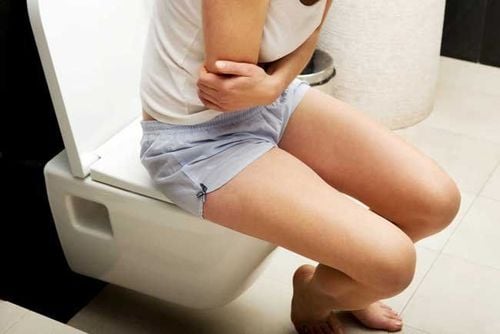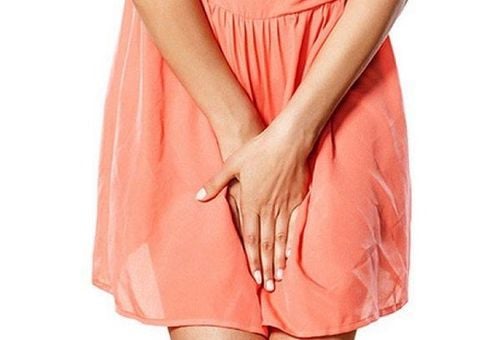This is an automatically translated article.
The article was professionally consulted by Specialist Doctor I Nguyen Thi Man - Department of Obstetrics and Gynecology - Vinmec International General Hospital Da Nang. The doctor has more than 10 years of experience in diagnosing, consulting and treating in the field of Obstetrics and Gynecology.Genital prolapse and urinary incontinence are diseases that are not life-threatening but greatly affect women's activities and work. Many women suffering from this disease often do not know where to treat it and are often shy, hiding their disease, especially they have trouble in their marriage relationship. Crossen surgery is the method used to treat genital prolapse. So, what is Crossen surgery and how does it work?
1. What is genital prolapse?
Genital prolapse, also known as pelvic organ prolapse, is known to be caused by a weakening of the support system of the perineum, resulting in the descent of the pelvic organs into the vagina, the appearance of a prolapsed mass. in the vulva and perineum. Initially, the size of the genital prolapse is small, the prolapse is infrequent, occurs when working or walking a lot, lying down, the mass drops into the vagina or can be pushed up on its own. Later on, the prolapsed mass became larger, prolapsed frequently, did not push up, accompanied by heavy pain in the lower abdomen, a feeling of entanglement and discomfort in the vulva - perineal area.Symptoms of urinary disorders (due to prolapse of the bladder and urethra): difficulty urinating, painful urination, urinary incontinence, hematuria when there is cystitis or bladder stones formed due to prolonged urine stagnation. day. Disturbances of bowel movements (due to rectal prolapse): difficult defecation, constipation, or a feeling of straining or heaviness in the anal area. Many births cause after each birth, the muscles located in the lower abdomen will be torn, do not recover well, and heavy labor is also the cause of this condition.
2. Overview of Crossen surgery
There are many surgical methods of genital prolapse, including the Crossen procedure. Crossen method is to cut the entire uterus according to the vaginal line, suture the bladder, then sew the ligaments on both sides together to form a solid femur together with the vaginal suture to prevent the intestines from entering. fall down. This method is used for people over 40 years old and grade III genital prolapse. This is a difficult surgery, only applied at the central or provincial level.2.1 Indications and contraindications for Crossen surgery

Genital prolapse grade II, III Health enough to perform major surgery. No more desire to have children. There is no genital infection, if any, it must be treated thoroughly. There was no pelvic adhesions from any cause. No serious comorbidities. Contraindications:
Uterine restricted mobility. Invasive cancer of the uterus, cervix, vagina. The patient is still in the state of inflammation and other diseases such as heart disease, high blood pressure, diabetes. Diseases of adjacent organs such as ovaries, fallopian tubes. The vaginal cavity is too tight, not reaching the cervix. The size of the uterus is too large. The patient is too old and weak
2.2 Advantages and disadvantages of Crossen surgery method
Advantages:Crossen surgery is a general method of vaginal hysterectomy that can completely cure the disease. No incision on the abdomen ensures high aesthetics. Disadvantages:
Unfavorable surgical conditions (narrow) should have certain difficulties in the handling of blood vessels and easy to fall into deep pedicles if not careful. It is a difficult technique, requiring highly qualified doctors.
2.3 Crossen surgery procedure
Step 1: Disinfection and urinary catheterizationStep 2: Incision and dissection of the anterior vaginal wall and bladder
Crossen uses a horizontal incision on the cervix about 1 to 1.5 cm Use splenic scissors to enter the dissection layer to dissect up stairs. Dissection to where, gradually cut the vaginal mucosa there. Use a pair of gauze swabs to separate and push the bladder from the vaginal wall anteriorly and the front of the uterus posteriorly until the prolapsed bladder is pushed up through. front pocket. When dissection, care should be taken to make the right incision (through the Halban membrane, the submucosa of the vagina) Cut the vesico-uterine ligament Thoroughly dissect the two bladders to the end of the sacral anterior to avoid injury or encountering the ureters. Step 3: Incision and dissection of the posterior wall of the vaginal mucosa Pull the cervix up and forward
Transverse incision behind the ring follows the cervix in continuity with the horizontal incision in front. Use your fingers to wrap gauze or clamp a pair of gauze small tubercle separates posterior and bilateral vaginal mucosa to sac of Douglas after dissection of uterine body, exposes lateral uterine ligament, inferior portion of broad ligament and uterosacral–posterior Step 4 : Pairing and cutting the pedicle, ligaments, hysterectomy
Use long gauze to push the bladder up and place a valve below the pubic joint to keep the bladder from descending, while exposing the sac anteriorly Cut the lower part lateral ligament. (under the broad ligament) Open the sacrum anterior and posterior sacrum Inversion of the fundus into the vagina: insert two fingers into the posterior sacrum invert the fundus through the anterior sacrum Use your fingers to examine the back of the pedicles and ligaments for pairing Use each pair of forceps with strong teeth in pairs to cut the rest of the right and left sides of the uterus Clip under the lower part of the lateral ligament. + Clamp between the uterine pedicles Clamp on the pair from top to bottom, the pedicle pair, the fallopian tube and the round ligament (In order to easily cut the ligaments, the uterus must be pulled to the opposite side) After cutting the pedicle and ligaments, the uterus will fall out of the vagina Close the bladder peritoneum anteriorly with the peritoneum of the same map in the back Use rat tooth forceps or two threads to suture the bladder peritoneum anterior and posterior to the same map behind to make a landmark for suturing the peritoneum Step 5: Combined sutures on both sides of the lower bladder and fix the bladder without prolapse
Remove the bladder support valve and bladder support gauze Pull the pair of ovaries and round ligament the sides down to reveal the middle of the round ligament. Close stitches of the 2 round ligaments. The prongs secure together the bilateral round ligaments and the vaginal wall below the bladder neck. The following sutures suture the two round ligaments separately until the pair clamps Step 6: Stitch the pedicle and ligaments to form a layer of supporting organization for the pelvic region
Close the remaining 4 ligaments and pedicle at the bottom. together Using durable Vicryl or perlon thread sew separate stitches that overlap from top to bottom, the last stitch must pull the two uterine ligaments – both sides up and close to the perineum After suturing the These bilateral ligaments together, the perineum area and vaginal arch are strengthened by a solid piece of fibromuscular muscle. Step 7: Sew the vaginal wall anterior
Cut back the excess of the vaginal mucosa first so that when sutured, the vagina will fit close to the lower ligament organization Using Vicryl sutures, sew loose stitches to close the right and left vaginal edges. 8: Restoration of posterior vaginal wall. Follow the tenses described above.
2.4 Follow-up after surgery
Monitor your general condition, special vital signs in the first 24 hours after surgery. Monitor vaginal bleeding and intra-abdominal bleeding. Intraoperative bleeding often occurs in surgery for genital prolapse in particular as well as in gynecological surgery in general Monitoring and care of bladder catheter Care for personal hygiene: vaginal, perineal with solution betadine solution or other antiseptic solutions Diet: give liquid food early, exercise soon after surgery
2.5 Possible complications
Bleeding due to retraction or tethering of blood vessels does not stop Injury to the bladder, rectum due to dissection Bacterial infections caused by vaginal and cervical ulcers that have not been cured.Please dial HOTLINE for more information or register for an appointment HERE. Download MyVinmec app to make appointments faster and to manage your bookings easily.














